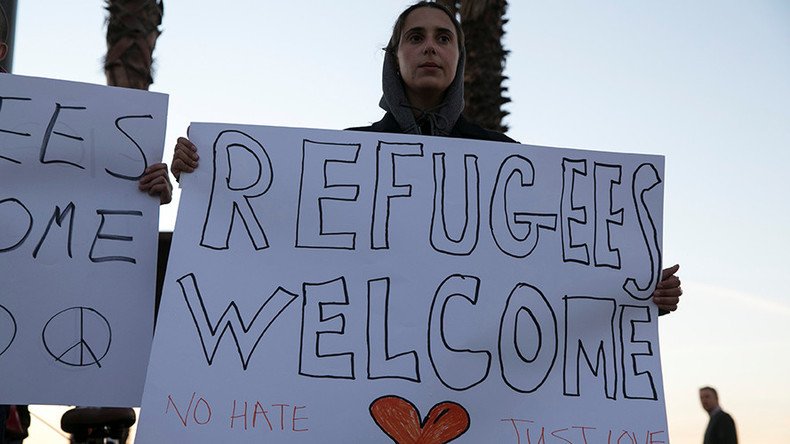Refugee entry to US slumps despite court blocks of Trump travel ban

The number of refugees entering the US dramatically fell in the past several months even as President Donald Trump’s executive orders banning entry from certain Muslim-majority countries has been blocked in court.
Last October, a reported 9,945 refugees arrived in the US, but that figure steadily declined to just 2,070 in March, a six-year low, according to data released by the Refugee Processing Center (RPC).
RPC did record a slight uptick last month, however, with 3,316 refugees coming in.
Soon after taking office in January, Trump signed the “Protecting The Nation From Foreign Terrorist Entry Into The United States” executive order, temporarily barring residents from seven Muslim-majority countries from traveling to the US. The executive order was struck down by a federal judge just after it went into effect.
Despite being blocked by the courts, the number of refugees entering the US fell from 6,777 in January to 4,580 in February, according to the RPC.
The executive order also suspended any Syrian refugees from entering the country until Trump “determined that sufficient changes have been made to the USRAP to ensure that admission of Syrian refugees is consistent with the national interest.”
Refugees from Syria dropped from 1,318 in January to 673 in February, according to the RPC.
After the first executive order was blocked in the courts, Trump signed a revised executive order of the same name in March, temporarily blocking residents from six predominantly Muslim countries from entering the US, which was blocked by a federal judge before it could take effect.
Still, refugee entry to the US fell from 4,580 in February to 2,070 in March.
While the second executive order left Iraq off the list of banned countries, only 192 Iraqi refugees came to the US, down from 643 in February. Additionally, the revised executive order did not include the same restrictions for Syrian refugees, however. The number of refugees from that country also dropped from 673 in February to 282 in March.
Both executive orders also decreased the maximum admittances to the US from 110,000 to 50,000 for the 2017 fiscal year. The 50,000 cap was not blocked by a court until mid-March. While the cap was in effect, the State Department was forced to greatly slow monthly arrivals.
Erol Kekic, executive director of the Immigration and Refugee Program for Church World Service, told the Associated Press that their program, which is one of the world’s largest resettlement organizations, “simply can’t be turned on and off like a faucet.”
The courts have since returned the cap on refugees to 110,000 a year, but the US is only estimated to take in 60,000 in the 2017 fiscal year, according to AP.
“Tickets were canceled, exit permits were canceled,” Kay Bellor, vice president of programs for the resettlement agency, Lutheran Immigration and Refugee Services, told AP. “You can’t just turn around and say, ‘everybody get back on the plane.’”
The state that accepted the most refugees and Special Immigrant Visa recipients in the fiscal year 2017 was Texas, with a total of 1,403 recorded by the RPC.
In September, Texas Governor Greg Abbott withdrew the state from the federal resettlement program, which he said was “riddled with serious problems that pose a threat to our nation,” in a press release announcing the withdrawal.
In April, the Texas Senate passed legislation to abolish the state's Office of Immigration and Refugee Affairs and the Governor ’s Advisory Committee on Immigration and Refugees.
“I think it would be a good idea to have a time-out on the whole resettlement program,” Texas state Senator Don Huffines (R-Dallas) who authored the bill, told the Associated Press. “We’ve got to keep Texas safe.”
In March, Tennessee became the first state to sue the federal government over refugee resettlement on the grounds that it violates the Tenth Amendment of the US Constitution. The lawsuit alleges that the federal government cannot force the states to pay for the refugee resettlement program.
The state is asking the court to stop resettling refugees in Tennessee until all costs associated with the settlement are incurred by the federal government.
The RPC reported that more than two-thirds of the total refugees come from Africa and Near East/South Asia. In April, more refugees came from the Democratic Republic of Congo than any other country, with 607 recorded by the RPC. While in March, more refugees came from Somalia, with 335 recorded by the RPC.














